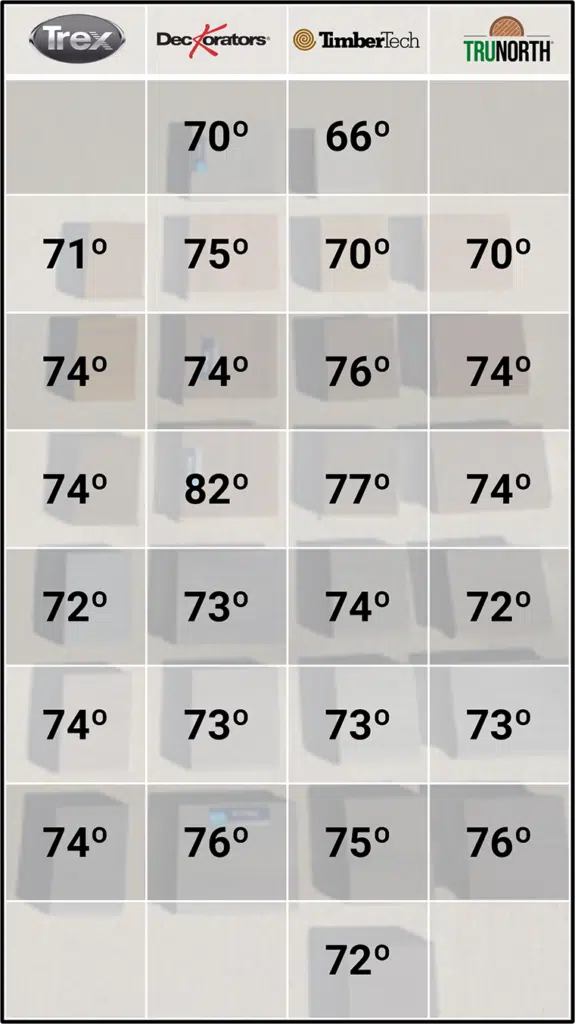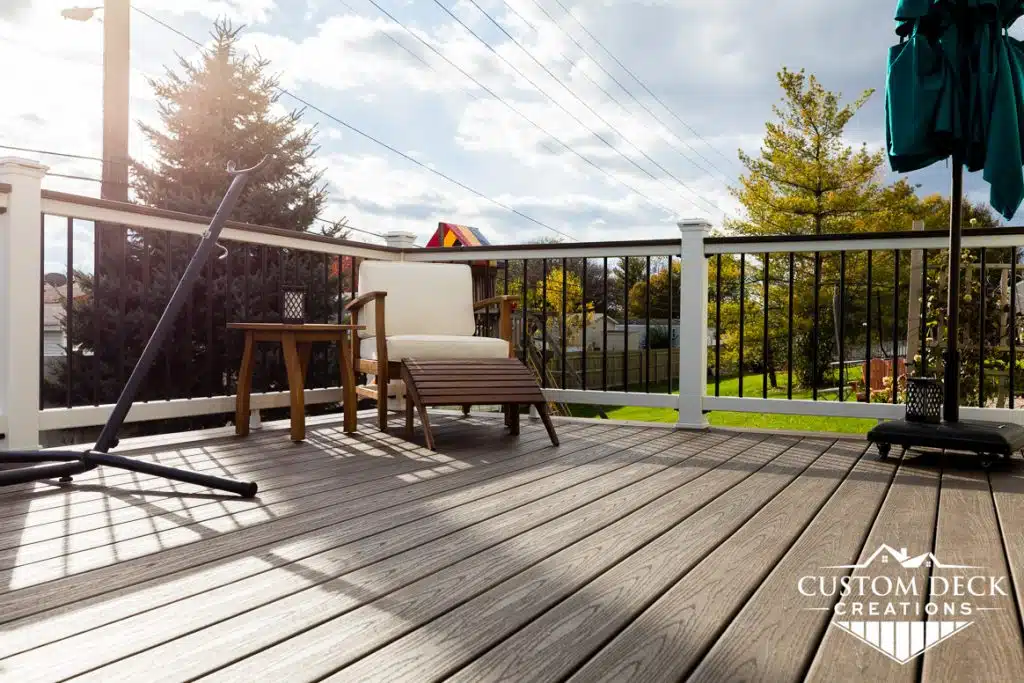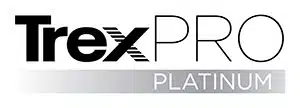When it comes to selecting the perfect decking material for your outdoor space, one critical factor that often comes into play is how hot the deck gets under the sun. Here is all the information about how hot a composite deck gets.
With various options available in the market, such as Trex, Deckorators, TimberTech, and TruNorth, homeowners are keen to understand which materials and colors offer the best in terms of comfort and usability during the warmer months. A recent experiment aimed to shed light on this very topic, focusing on the temperature differences between different decking materials and colors.
SPOILER ALERT: The warmth of a composite deck is not determined by its brand, as there’s no notable difference in temperature across various materials. Instead, the color of the decking plays the pivotal role in influencing its temperature.
The Experiment
The test involved samples from four leading decking brands: Trex, Deckorators, TimberTech, and TruNorth. Each brand provided samples ranging in color from light gray to dark brown. The objective was straightforward: measure and compare the surface temperatures of each sample under the same environmental conditions to determine how material and color affect heat retention.
Results Overview
This chart presents the findings of our experiment, organized by manufacturer, showcasing a spectrum of colors from the lightest shades at the bottom to the deeper, darker browns at the top. Each row corresponds to shades of a similar color, illustrating how hues vary across the spectrum.

Upon analyzing the data, a compelling narrative emerges: the material of the decking has a negligible impact on its heat retention properties. Instead, color plays the pivotal role in determining how hot the surface gets.
Lighter colors, regardless of the brand, tend to reflect more sunlight and thus absorb less heat, while darker tones absorb more sunlight, leading to higher surface temperatures.
For instance, the lightest colors across all brands showed minimal variation in temperature, demonstrating that when it comes to heat retention, the choice of decking material is less significant than the color. The darkest colors, while showing a bit more variation, still underscore the point that color is the primary determinant of heat retention.
Statistical Insight
To further interpret the results, we can look at the average temperatures for each brand across all their color samples. The averages are as follows:
- Trex: 73.2°F
- Deckorators: 74.6°F
- TimberTech: 72.4°F
- TruNorth: 73.2°F
These averages reinforce the initial observation: there is no significant difference in temperature between decking brands Trex, Deckorators, TimberTech, and TruNorth. The slight variations can easily be attributed to the inherent differences in shade and pigment within the colors themselves rather than the material composition of the decking.
Takeaways
The takeaway from this experiment is clear: when choosing decking material for your outdoor space, the color should be a primary consideration if heat retention is a concern.
While all the tested brands offer high-quality options for decking, the color of the decking has a far more significant impact on surface temperature than the material itself. This insight allows homeowners to make informed decisions based on aesthetics, cost, and durability, without worrying about significant differences in heat retention between different decking materials. For those looking to enjoy their decks even on the hottest days, opting for lighter shades can provide a more comfortable outdoor living experience, regardless of the brand chosen.
As always, Custom Deck Creations is here to help guide you through the selection process, ensuring that your new deck not only meets your aesthetic preferences but also offers the comfort and usability you desire.










